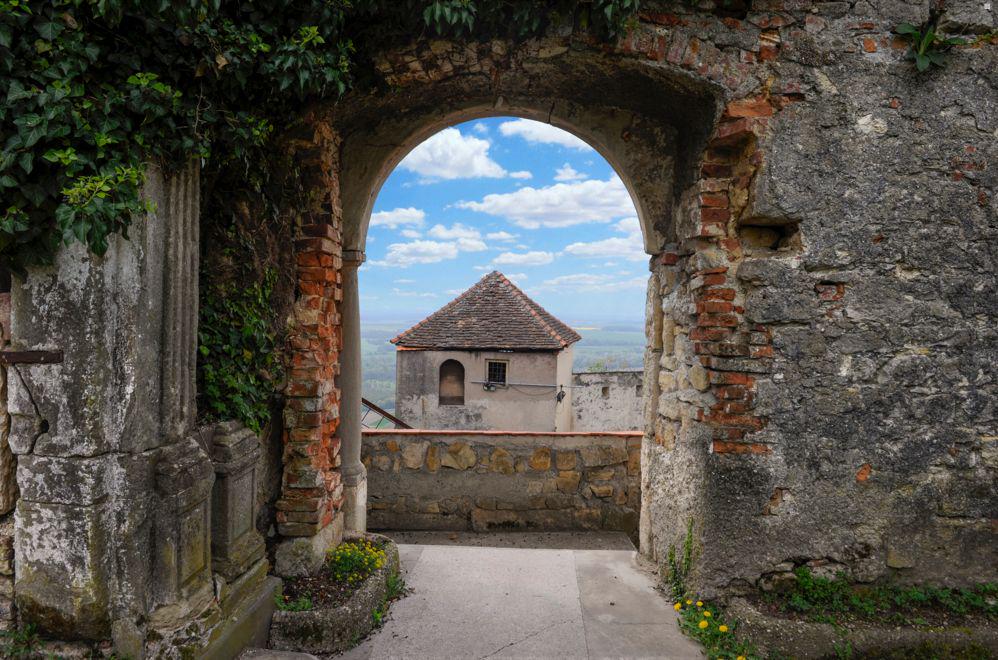
Like many castles and forts in Slovenia, much of Vurberk Castle lies in ruins these days. But its ancient walls give some indication of how important the structure once was.
The castle, not far from the Slovenske Gorice wine country of eastern Slovenia, was built in the 12th century and was named after its owners, the Wuermwerg family of nobles. “Wurm” means worm in German, and a snake once prominently featured in the family’s coat-of-arms.
The castle soon found itself in the center of political intrigue, as rival nobles from Austria, Hungary, and Bohemia vied for supremacy in the area. Sporadic battles broke out; they left the castle badly damaged. After the Hapsburgs took control of the area, Vurberk was restored, but the period of instability continued; the castle changed hands several times, passing from one German family to another.
Vurberk had an extensive system of defenses and an arsenal that included modern weaponry such as cannons. The fortifications, as well as lookout points in the hills surrounding the castle, proved especially useful against the Ottoman Turks, who organized several raids in their efforts to penetrate the Christian heart of Europe. The Turks did rampage through the surrounding countryside, but they never managed to take the castle.
Several times throughout its history, the castle changed its appearance to match the latest fashions of the time. In the 16th century, it received several Renaissance additions. But times of peace were often short-lasting. In the 17th century, a noble from the Herberstein family, who owned the castle, attacked a neighboring property and was killed during his raid.
Peace did finally return to the land, and the castle’s ownership alternated between the Attems and the Herberstein families until the 20th century; for most of this period, it served as a hunting lodge. But World War I and the political changes in its wake ushered in a new era as most of the German noble families left the Slovenian Lands. Between the wars, the Russian Red Cross operated a sanatorium for lung diseases in the castle. It was taken over by the Germans after the outbreak of World War II; they transformed it into a training camp for army officers. In 1945, the allies bombed the castle and left much of it in ruins.
Parts of it were repaired after the war, and the castle is now best-known as the venue of various cultural events; it also houses the local tourist bureau. Meanwhile, the ruined walls serve as a symbol of the turbulent times that marked the history of the Slovenian Lands.

































































